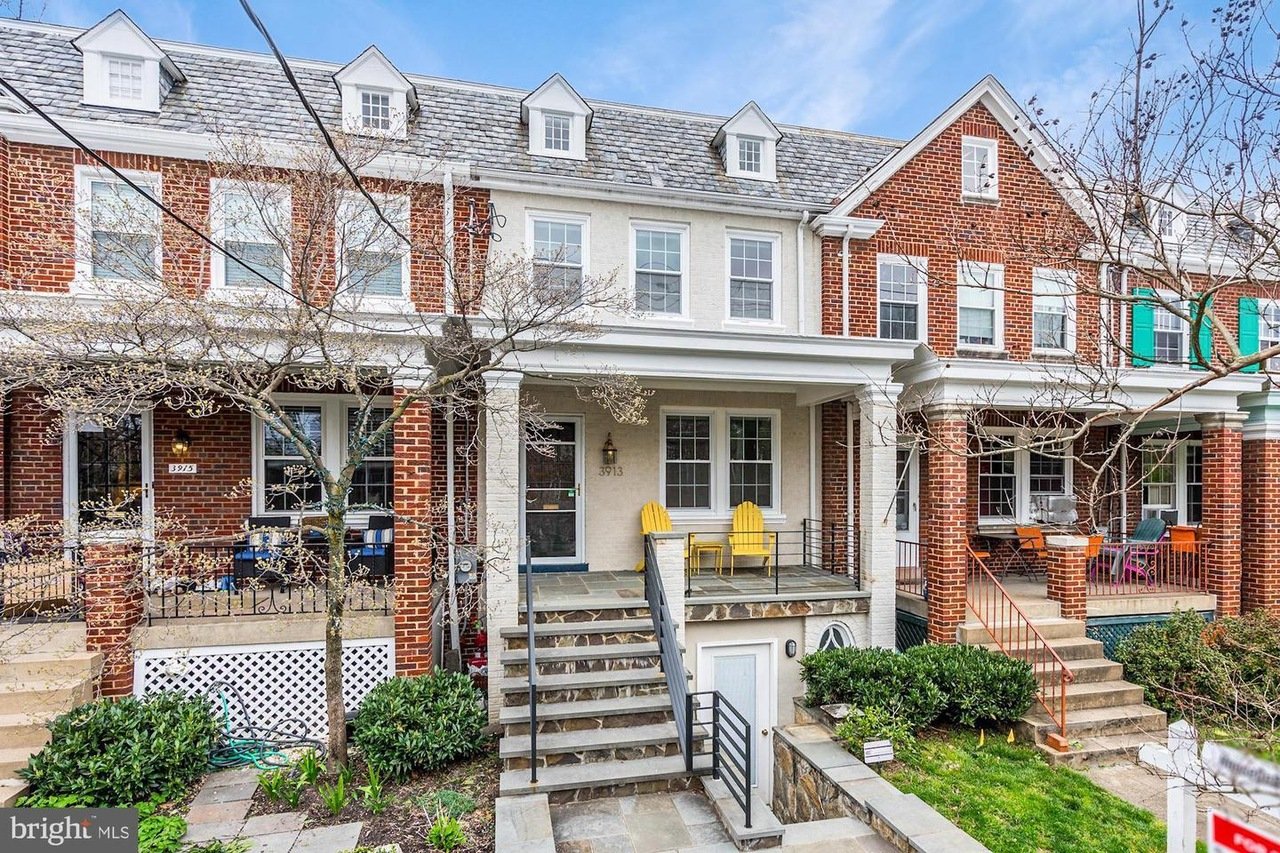An Alexander Calder painting was the inspiration for the redesign of this 1930s Tudor.
At the edge of Rock Creek Park, this former ambassador’s residence has large rooms where the owners, both attorneys, like to entertain. Although the Calder is modern, the couple wanted the living/dining area to have a classical feel.
“When we started this collaboration, we had no idea where it would lead,” says DC architect and interior designer Bruce Wentworth.
He was certain about his first line of attack—the fireplace, where the star of the couple’s art collection reigns. The original Colonial Revival mantel suited neither the Tudor architecture nor the Calder. A replacement in cast stone was honed in a 17th-century Jacobean style. The cream-colored stone and the black slate firebox are stylish without upstaging the Calder.
Wentworth says that when updating any home, you should respect its original style. “If the architecture is good, you want the interior to enhance it,” he says.
Wentworth divided the 16-by-30-foot living room into separate seating areas for more intimacy. As with the mantel, the furniture around the Calder is simple yet striking. The sculptural backs of a pair of Barbara Barry Grace Lounge chairs are the first view from the foyer. Wentworth says furniture should be considered from all sides.
“It’s important that the back be attractive when it’s floating in the room,” he says. “We like the fact that you can look through so it isn’t a heavy obstacle.”
The chairs’ buttery worsted wool is paired with textured but neutral fabric on flanking sofas. The room’s wheat, gold, and yellow palette is accented with splashes of red, in the cushions and the Oriental rug, to echo the Calder’s primary hues.
Another seating group was placed in the south-facing bay window, an area large enough to accommodate a baby-grand piano. At the opposite end of the room, a chenille-covered chaise lounge and a pair of chairs make up a third grouping.
In the dining room, Wentworth added more sculpture with the elegant curves of the mahogany dining table and chair legs. The dramatic lines balance the neutral fabric.
The original light fixture, says Wentworth, was “a skimpy little wire thing with bulbs, completely out of scale with the room.” So he popped on some lampshades to create a romantic chandelier.
Fireplace mantel: Old World Stoneworks, Texas; oldworldstoneworks.com.
Chairs around fireplace: Grace Lounge chairs by Barbara Barry for Henredon. Bechamel fabric (color: Grain) by Rogers & Goffigon. Chairs start at about $3,900, at Danker Furniture.
Dining-room table: by Barbara Barry, from Baker. Around $10,000.
Dining-room chairs: custom-made by TCS Designs (to the design trade only); 828-324-9944. Rogers & Goffigon “mohair velvet” upholstery in color Sap.
Dining-room drapes: Abracadabra silk in colors Pearl and Harvest, by Donghia (to the design trade only), Washington Design Center; 202-479-2724; donghia.com.
Architect/designer: Bruce Wentworth; 240-395-0705 ext. 100; wentworthstudio.com.
“You can have a contemporary interior in a traditional home, but you have to be careful,” says Bruce Wentworth, who adds that big changes can be impractical if the structure doesn’t suit the style. “If it’s good architecture, why rip it out?” It’s best to choose a home that already has some crucial features, such as large rooms, if you want a contemporary interior.
















